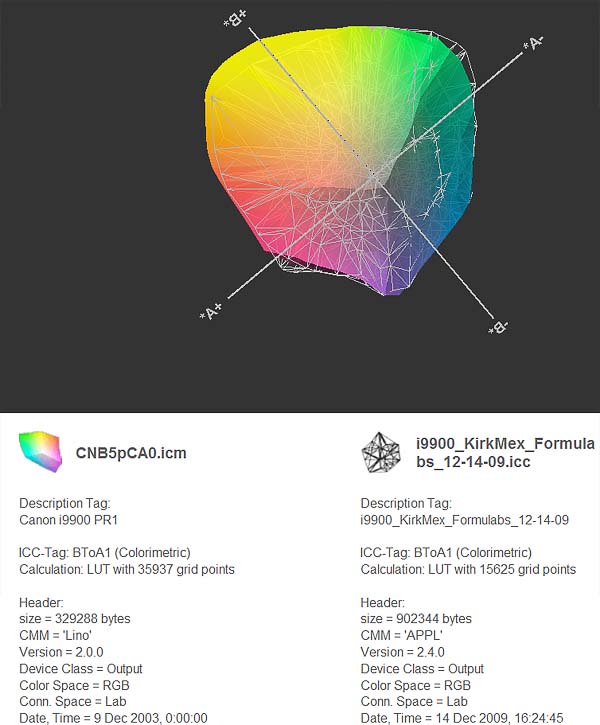martin0reg
Printer Master
.. many photographs are given to friends .. who are taping it to refrigerators ..
martinOreg wrote
.. many photographs are given to friends .. who are taping it to refrigerators ..
Be careful not to compare your own usage of photos with some other ( very experienced ) people here in the forum. I think there are different kind of people, with different kind of needs:wilko wrote
Longevity is no longer a problem. Digital photos are stored on hard drives or recordable media. So what if print outs fade after a few years. Just print out further copies.
I agree, Marceltho. In my case, while new to this forum, I've been printing in a color managed workflow for many years. Since moving to a Canon Pro9000 Mk.II I've found this site as a means to learn how to make best use of this new printer. I don't sell my work, but as an enthusiast photographer I am quite critical of the photos I produce for friends and family. I want them to look right and last a while.marceltho said:I just wanted to say, that not everyone's need is the same, but we all need input from the more experienced professionals here on this forum.
Then I think you should have a look at Epson printers using pigment inks: aftermarket pigment inks like Image Specialists/Inkrepublic/OCP do perform very well in longevity. I have tested both Inktec CLI-8 and Hobbicolors UW-8: Inktec faded rapidly in weeks considerably. Hobbicolors UW-8 will last about half a year before noticable fading when exposed to full sun and in free air. I have made prints with Image Specialists IM-K4 on my Epson Pro 3800 and some prints have been exposed towards the sun and in free air and not a single amount of fading to be seen now about 2 years ago: not a single amount of fading to be seen, but the cheap paper containing OBA's (optical brigthener agents) tends to become a bit yellowish, but the prints a fresh and no sign of fading at all.strobemonkey said:@marceltho - well said!
As a photography enthusiast, I need colour accuracy and longevity. So far I've never been happy with 3rd party inks.
If you need longevity, go with pigmented OEM inks and quality paper, coat them with a UV absorbant coating, them mount them under museum glass after they are completely dry. If you need "color accuracy", I'm afraid that you're facing a real struggle. The word "accuracy" means "the quality of being near to the true value". I have a friend who shoots artwork for a museum so that they can document the work and also sell prints (not low cost versions) in their museum shop. This is a case where they truly need "accurate colors". I can't disclose his lighting and processing tricks of the trade, but in general:strobemonkey said:.... I need colour accuracy and longevity.

Now this is a great idea! A question though: is there an effective way of flushing the remains of the ink currently being used so as not to contaminate the other?mikling said:There is an alternative that is readily available. Keep a set of OEMs on the side. Whenever you think you need OEM, just change the cartridges! Simple enough? That way you get the best of both worlds. Economy when you can live with the limitations of aftermarket and want to save money or longevity with OEM and that tiny extra gamut at the extremes when you want the best. Do note though that tiny extra gamut might not be even noticeable to most after the proper rendering intent is applied and the adaptive process of our eye brain combination kicks in.